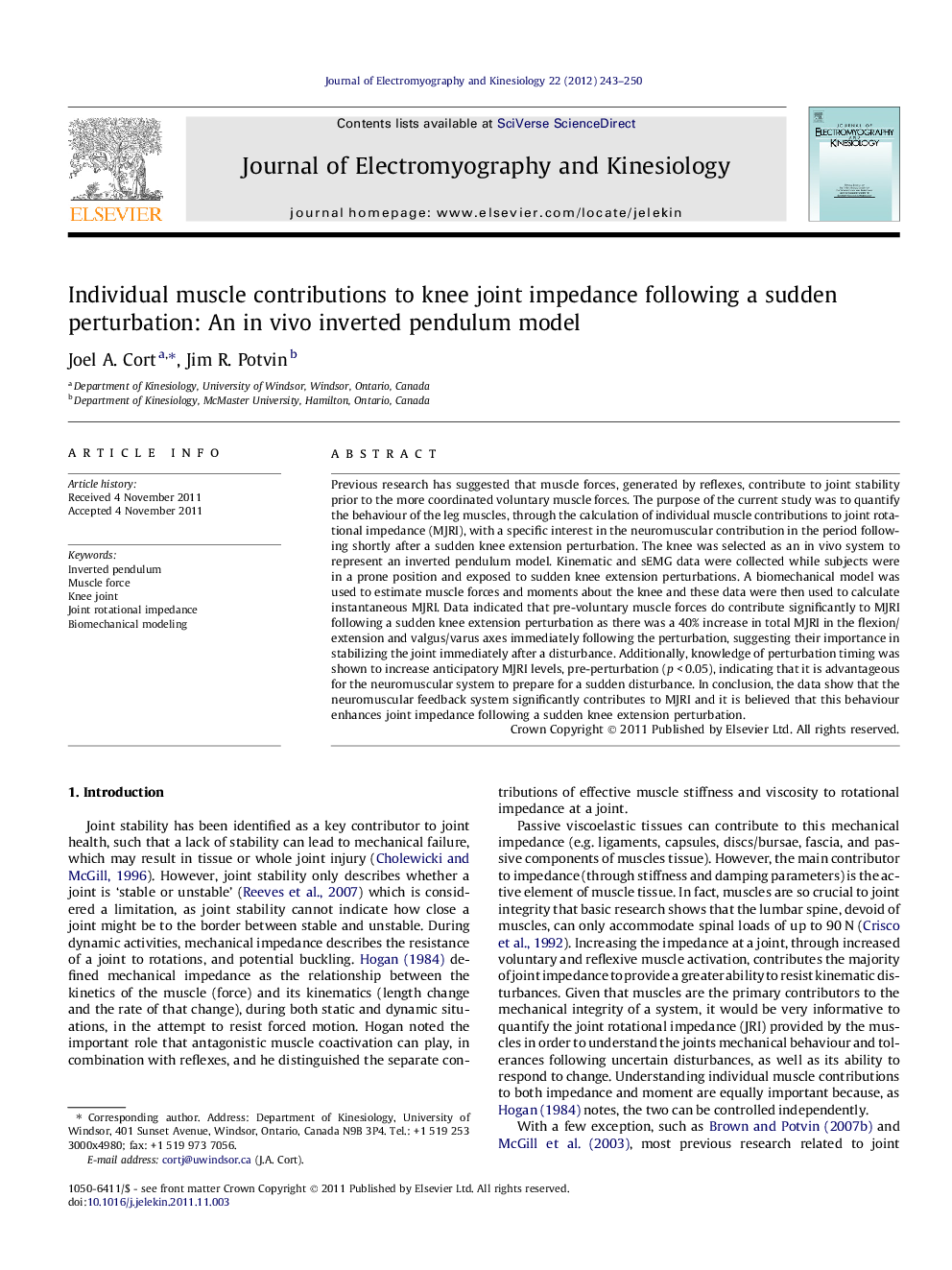| Article ID | Journal | Published Year | Pages | File Type |
|---|---|---|---|---|
| 4064996 | Journal of Electromyography and Kinesiology | 2012 | 8 Pages |
Previous research has suggested that muscle forces, generated by reflexes, contribute to joint stability prior to the more coordinated voluntary muscle forces. The purpose of the current study was to quantify the behaviour of the leg muscles, through the calculation of individual muscle contributions to joint rotational impedance (MJRI), with a specific interest in the neuromuscular contribution in the period following shortly after a sudden knee extension perturbation. The knee was selected as an in vivo system to represent an inverted pendulum model. Kinematic and sEMG data were collected while subjects were in a prone position and exposed to sudden knee extension perturbations. A biomechanical model was used to estimate muscle forces and moments about the knee and these data were then used to calculate instantaneous MJRI. Data indicated that pre-voluntary muscle forces do contribute significantly to MJRI following a sudden knee extension perturbation as there was a 40% increase in total MJRI in the flexion/extension and valgus/varus axes immediately following the perturbation, suggesting their importance in stabilizing the joint immediately after a disturbance. Additionally, knowledge of perturbation timing was shown to increase anticipatory MJRI levels, pre-perturbation (p < 0.05), indicating that it is advantageous for the neuromuscular system to prepare for a sudden disturbance. In conclusion, the data show that the neuromuscular feedback system significantly contributes to MJRI and it is believed that this behaviour enhances joint impedance following a sudden knee extension perturbation.
